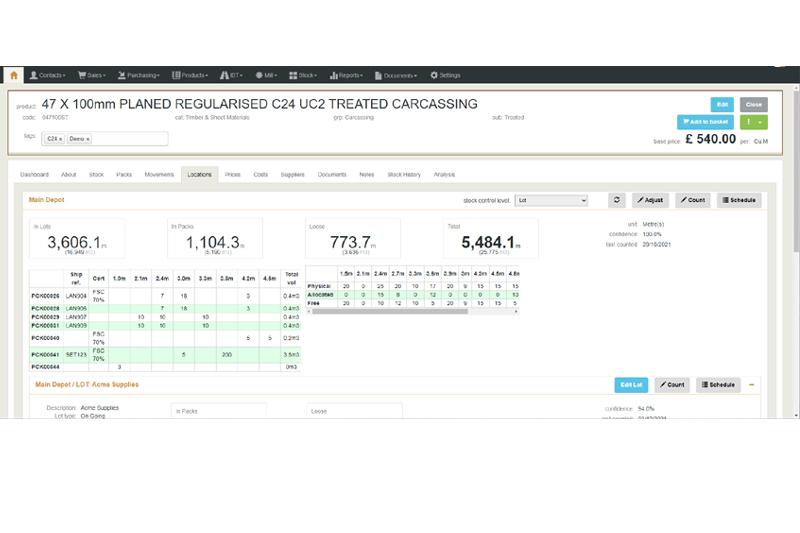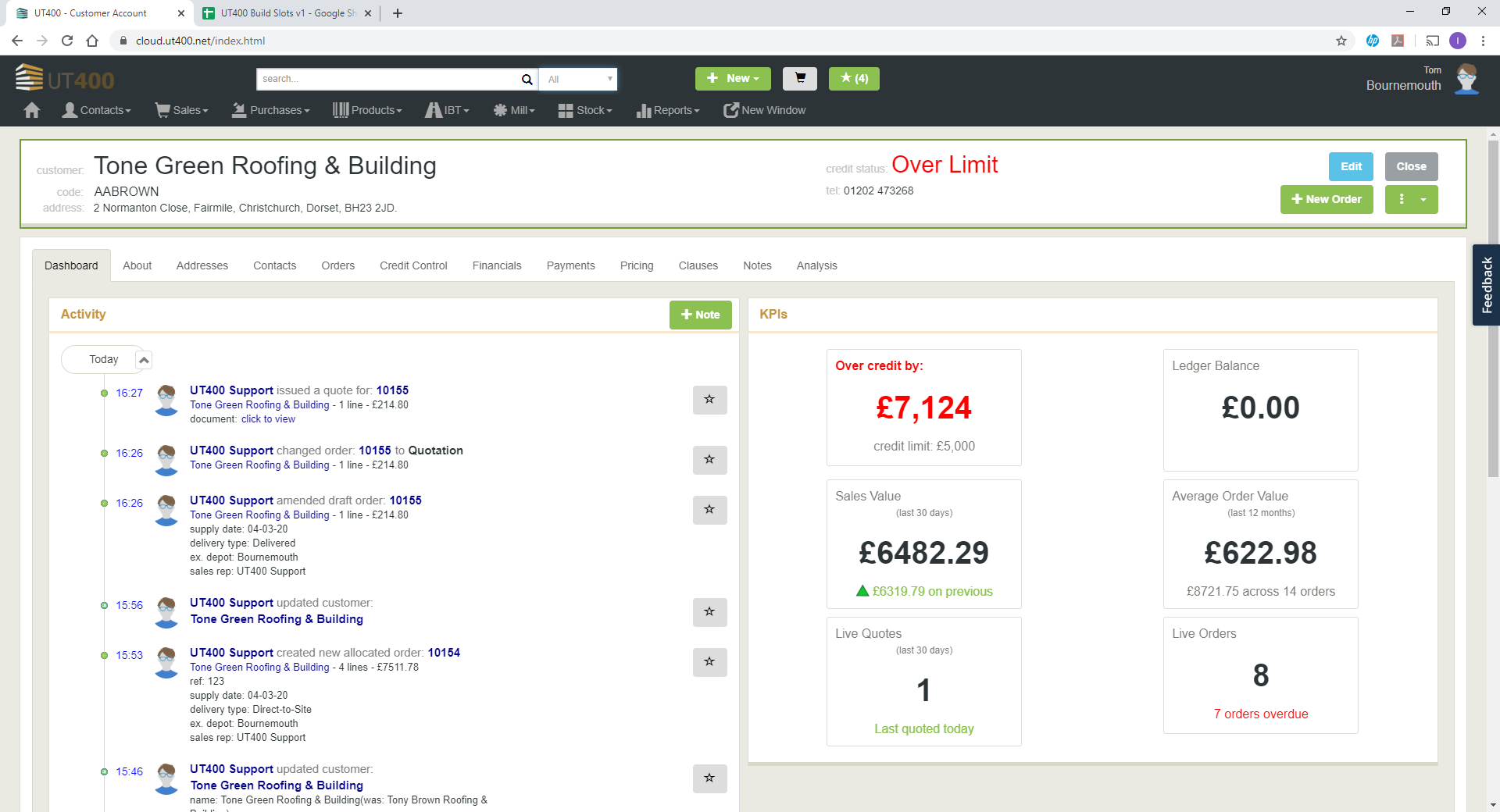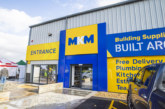
It may sound a strange question but for merchants relying on financial platforms or manual systems for their back-office operations, there could be a lot of value being lost. PBM spoke with Ian Oldrey at Ten-25 Software to find out how industry-specific ERP software can help merchants to find their blind spots and turn them into opportunities.
They say that information is power, but knowing exactly what information you need, and accessing it easily, can be easier said than done. Many timber and builders’ merchants are successfully using fairly basic systems to run their trading, stock and operations — so why bother with the expense and hassle of upgrading to an industry-specific version?
“We speak to merchants every day who are currently using financial platforms like Sage, Xero or QuickBooks to manage stock and trading, and some are still using manual methods — think Excel spreadsheet. And yes, OK, it works,” says Ian. “But in most cases, there is a lot they’re potentially missing out on. It really does pay to use the right tools. Yes, I’m biased, but I’ve seen businesses working in both ways and it really does have a massive impact.”
The right tools for the job
Merchanting, much like retailing, relies on certain critical functions. But merchanting is often, of course, more complex. Firstly, merchanting often deals with the trading of measured materials rather than simply unit-based, barcoded items.
As Ian explains: “Off the shelf software can’t handle the flexibility that merchanting requires. Being able to raise mill lines from orders, send materials back to stock as a different length and still retain total accuracy across your stockholding is actually a very complex thing to do.
“But it’s so valuable — it reduces waste, it makes your whole stockholding more profitable and it saves a whole heap of time, every day. Interbranch transfers, forward contracting — merchanting isn’t straightforward, so the software merchants use needs to be quite sophisticated to handle it well.” Secondly, where a retail transaction tends to be instantaneous, merchanting often needs to incorporate time delays. Sometimes that’s because of material availability, sometimes it’s because the customer doesn’t need the stock right away, sometimes it’s because a chosen material needs particular milling or finishing processes applied before delivery — and so on.
Secondly, where a retail transaction tends to be instantaneous, merchanting often needs to incorporate time delays. Sometimes that’s because of material availability, sometimes it’s because the customer doesn’t need the stock right away, sometimes it’s because a chosen material needs particular milling or finishing processes applied before delivery — and so on.
However, merchants need to be able to account for the timeline of a product or multi-product delivery, as well as the intricacies of the treatments required along the way.
“If you’re dealing with timber or steel, for example, having the capability to switch between metrics, or run reports by length, weight or volume is critical,” says Ian. “Having the right software for your sector can save time, boost profits and actively improve both staff and customer experience.”
Powerful stock control
According to Ian, one of the biggest advantages of an industry-specific system is that it’s designed to work around a merchant’s business, rather than a merchant having to shoe-horn operations to fit a generic software system.
He said: “We have built over 120 KPIs in Merchanter to help merchants see and measure what’s happening in the business. Take stock turn for example — being able to see, at a glance, how regularly and profitably a particular stock line is purchased can build up an enormously valuable picture of the efficiency and profitability of your sales and replenishment tactics, giving you instant insights which you can apply in your stock profile and purchasing decisions.
“Or Stock Confidence, which gives an instant gauge of how accurate your stockholding figures are so you know where to focus your stock checks. It’s all designed to save time and build accurate, real-time access to what’s happening.”
“Merchanting isn’t straightforward, so the software merchants use needs to be quite sophisticated to handle it well.”
Indeed, in a volatile market, it’s important to be able to respond quickly and having instant access to information is vital. Ian continued: “Merchants need to be able to act fast, with prices and availability fluctuating the way they do. So price tracking has been a very popular feature for our customers. It helps them to remain profitable and check last bought or sold prices really fast, with margin protection built-in as a safety net too. It’s clever stuff.”
Customer insights can pay for themselves too, as Ian attests: “Most merchants know who their top customers are — but not so many know their fifth, or tenth, or fiftieth. While some customers may appear to be great for business, having the figures at hand to how profitable the relationship really is can be invaluable, as some customers could actually be costing you money, while others could be upsold to or optimised in other ways.
“How merchants use the information is up to them — but at least they’ll have the right data to base their decisions on.”
Integrating with best-in-class solutions
Traditionally, merchants have relied on monolithic, cumbersome trading systems which perform almost every task in the business. While at first glance that might sound handy, the unfortunate effect is actually that these systems are usually very slow to adapt to new requirements.
“If the last three years have taught the world anything, it’s the importance of responsiveness,” Ian contends. “Being flexible is vital, and without a modern, cloud-system underpinning your operations, it’s rather like trying to turn an ocean-liner as opposed to a speedboat.
“Modern systems sit as an agile hub at the centre of your business, linking up with best-in-class solutions to help augment your service and operational processes. These might be financial platforms like Sage, Xero or QuickBooks; eCommerce platforms like Shopify or WooCommerce; online selling services like NearSt or SnapIt, marketplaces like Plane & Simple or stock extension platforms like VirtualStock.”
Ian continued: “Whatever the technology you’re looking to take advantage of, you need a back office system that’s able to integrate to keep you at the cutting edge of merchanting possibility and customer expectation.”
 And of course, the right software can help merchants to reach their goals. Ian said: “We know not every merchant is looking to expand or take over the world, but in over 40 years of trading we’ve yet to meet a merchant who wouldn’t want to improve efficiency and profitability.
And of course, the right software can help merchants to reach their goals. Ian said: “We know not every merchant is looking to expand or take over the world, but in over 40 years of trading we’ve yet to meet a merchant who wouldn’t want to improve efficiency and profitability.
“That’s what a system like Merchanter can do. It’s built to highlight what needs highlighting, so you can make the most of every incremental opportunity. Little differences really add up to huge improvements.”
Ian concludes: “If you’re a merchant who has always worked this way, then you don’t necessarily know what modern systems are capable of. Even if you’re a way off actually investing in a newer, industry-specific system, I’d always encourage you to find out what’s out there in the market.
“Do the demos, have the conversations. If it’s still not worth the investment then there’s no harm done, but you might be surprised at just how much difference the right system can make.”
Click here for more information on Ten-25’s range of merchant services.
A version of this article appeared in the March edition of Professional Builders Merchant. Click here to read the full digital issue via the PBM website.









